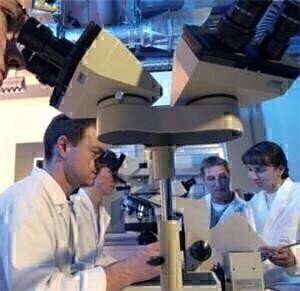News
Lighting up a new path for novel synthetic Polio vaccine
Mar 05 2015
Scientists from the UK and USA are using technology that helped in the design of a new synthetic vaccine to combat the foot and mouth disease virus (FMDV) to now target the virus that causes polio. The synthetic vaccine that is currently being engineered in collaboration with Prof. Dave Rowlands at the University of Leeds would provide a powerful weapon in the fight to rid the world of polio. This project is being funded by a £438,000 grant from the World Health Organisation and the Bill & Melinda Gates Foundation.
The team’s hope is to create a vaccine that does not contain the viral genome but instead ‘mimics’ the structure of the live virus. Such a vaccine would be quicker, easier and safer to produce. Even after the apparent global elimination of poliomyelitis it will be necessary to continue vaccination as a precaution against reintroduction of the virus from hidden sources, such as rare chronically infected carriers. A synthetic vaccine would fulfil this role without the inherent danger of accidental release of virus associated with the production of current vaccines. Eventually such vaccines could pave the way to completely eliminating the necessity to vaccinate.
Speaking at the American Association for the Advancement of Science (AAAS 2015) meeting in San Jose on the 13th February 2015, Prof Dave Stuart, Life Sciences Director at Diamond Light Source, the UK’s national synchrotron science facility; and Professor of Structural Biology at Oxford University, explains: “Using a combination of techniques, including X-ray crystallography at Diamond and electron cryo-microscopy in Oxford, we’ve begun the task of gathering crystal structures and electron microscopy images that will tell us what we need to know to stabilise the shell of the virus and engineer a strong vaccine that has the ability to bring about the desired immune response in humans.”
“Following on from the success we’ve had with the foot and mouth disease vaccine, we aim to transfer the approach to vaccines for other viruses including polio. Early results with polio are very promising, with synthetic particles being produced and evidence of successful stabilisation.”
Scientists working on the next generation of vaccines and inhibitors to combat viruses and bacterial infections will have their research capabilities greatly enhanced when the UK’s new Electron Bio-Imaging Centre (eBIC) opens in late 2015. Conveniently located next to Diamond’s synchrotron building, the centre’s powerful cryo-electron microscopes will allow scientists to visualise the structure of the cell to help further understand molecular make-up and will provide new tools to image single bio-molecules.
The new centre will offer the imaging approaches of single particle analysis of biological macromolecules and cellular tomography, as well as electron crystallography. These techniques will complement the atomic mapping possible with the established macromolecular crystallography beamlines. Additional capabilities coming online in the future are elemental mapping in cells provided by the X-ray nanoprobe and the larger scale cell imaging capability of the new Full Field Cryo Transmission X-ray Microscope (cryo-TXM).
These complementary new facilities are expected to draw scientists from around the world, and establish the nation’s synchrotron as a hub of world-leading research into disease prevention.
Digital Edition
Lab Asia Dec 2025
December 2025
Chromatography Articles- Cutting-edge sample preparation tools help laboratories to stay ahead of the curveMass Spectrometry & Spectroscopy Articles- Unlocking the complexity of metabolomics: Pushi...
View all digital editions
Events
Jan 21 2026 Tokyo, Japan
Jan 28 2026 Tokyo, Japan
Jan 29 2026 New Delhi, India
Feb 07 2026 Boston, MA, USA
Asia Pharma Expo/Asia Lab Expo
Feb 12 2026 Dhaka, Bangladesh




















